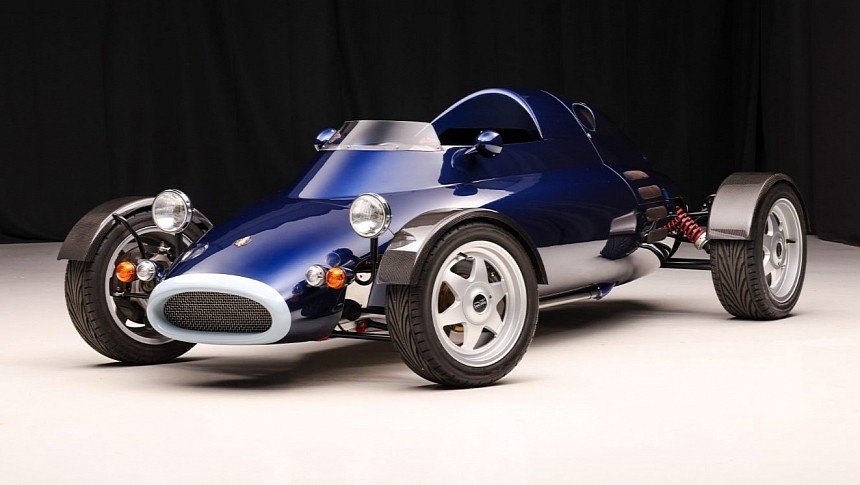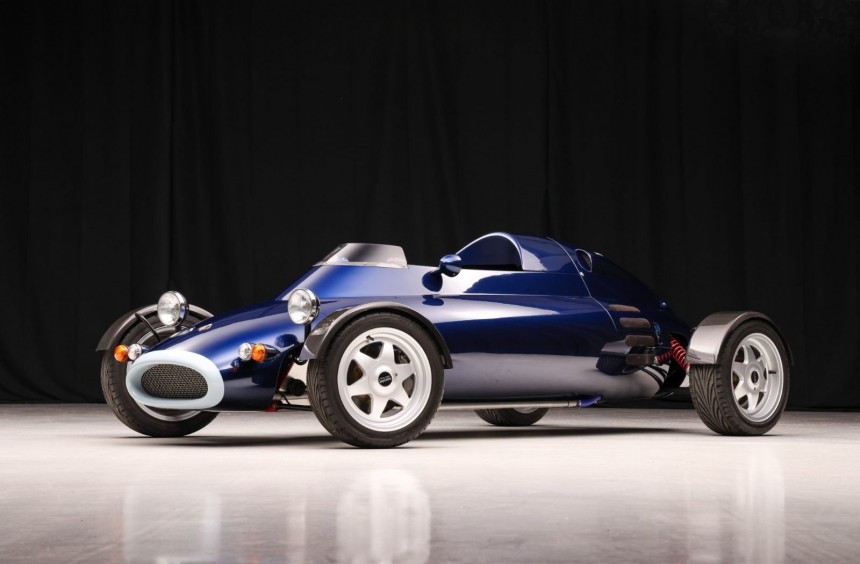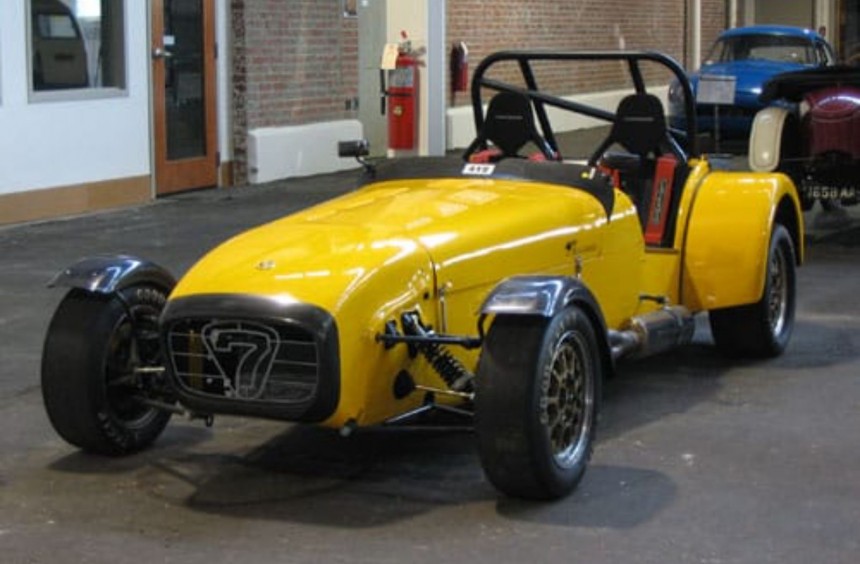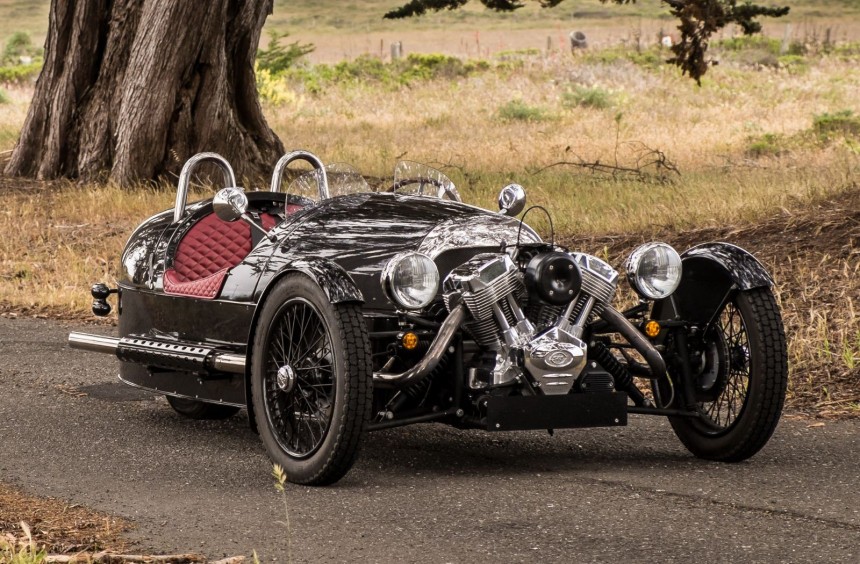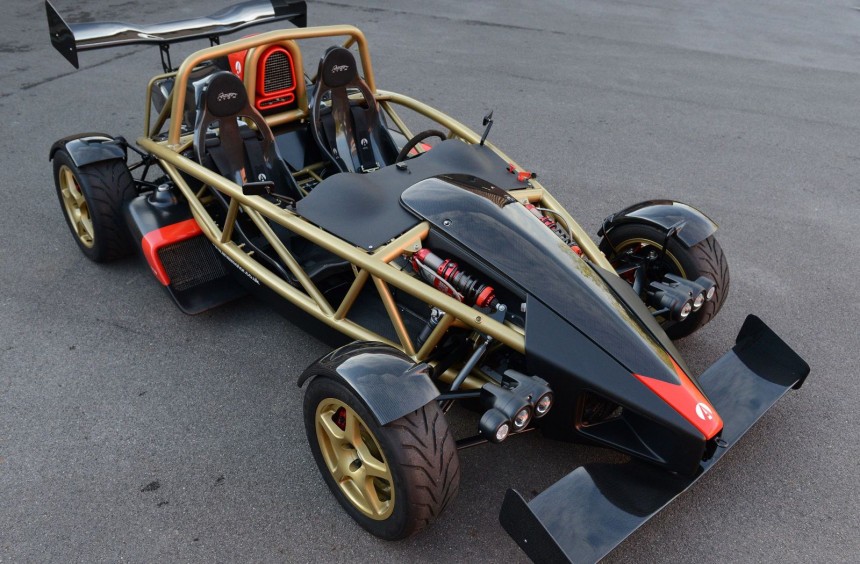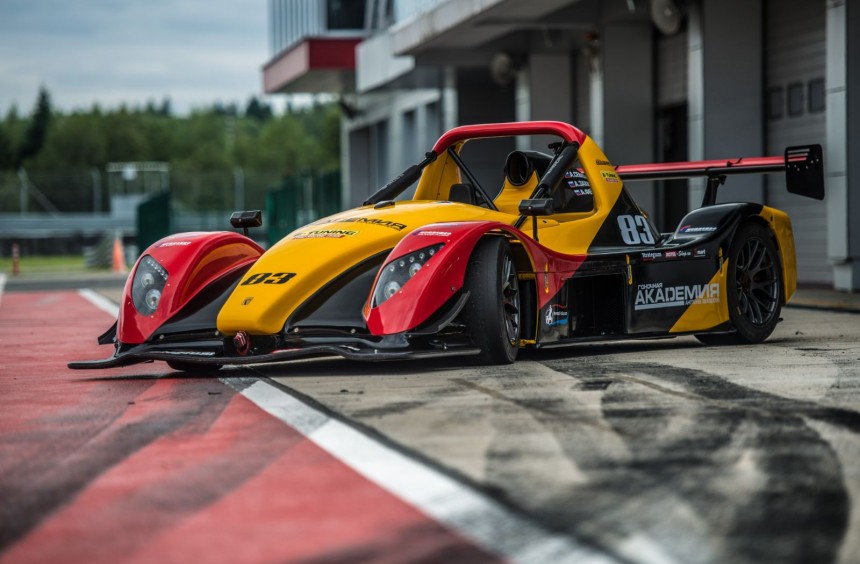Lightweight and unconventional, these production cars ditched traditional engines in favor of high-revving performance units initially developed for motorcycles.
You might have heard about motorcycles powered by car engines, but how about the other way around?
Well, moto-powered cars exist, and they're more than you might think have successfully entered production.
Though they share the same principles as those that power cars, motorcycle engines are usually lighter and provide a better power-to-weight ratio.
They're also cheaper than automobile engines with comparable outputs, which is why some manufacturers have decided to use them in the production of cars.
One of the earliest, most successful examples was the Isetta, a microcar built by Iso Rivolta and BMW during the fifties and sixties. Both manufacturers used motorcycle engines to keep their respective Isetta's overall weight and production costs at a minimum.
Apart from the Isetta, modern lightweight production cars have successfully used motorcycle engines, and in this article, we'll take a look at the most fascinating five.
Legendary Formula 1 designer and engineer Gordon Murray always dreamed about building an F1 car for the road.
He did just that with the McLaren F1 (and the modern GMA T.50), but you may be surprised to learn that the iconic supercar was different from the F1-inspired road car he created.
About a year before the McLaren F1 was unveiled, Murray and former racing driver Chris Craft founded the Light Car Company with the aim of producing the fastest ultra-lightweight road car.
Simply called Rocket, the open-wheel, single-seat model tipped the scales at 850 pounds (385.6 kg) and could reach a top speed of 142.9 mph (230 kph) courtesy of a 1,000-cc Yamaha engine available in either 143 hp or 165 hp setups.
Launched in 1992, the nimble little Rocket was also capable of accelerating from 0 to 60 mph (97 kph) in four seconds, which made it one of the quickest production cars in the world.
The initial production run lasted until the end of 1992 and was cut short by safety regulations changes. A few units were subsequently completed in the late 1990s, bringing total production to 46 examples.
Designed by the famed Colin Chapman in the late 1950s, the Seven was the street-legal embodiment of the Lotus founder's "add lightness" creed.
Conceived to be driven on both the road and the track, the Seven was initially available only as a kit car and became one of the most successful Lotus production cars of all time.
When the carmaker discontinued the model, the blueprints and manufacturing rights were purchased by Lotus dealership-turned-carmaker Caterham.
Under Caterham's ownership, the Seven has continued to evolve, and it's still in production today.
Among the huge number of versions developed by Caterham, the limited-series Blackbird introduced in 2000 remains one of the most intriguing.
Created to push the notion of lightweight and power to another level, this version received a 1,137-cc DOHC four-stroke from the Honda CBR1100XX Super Blackbird (hence the name).
With 168 hp on tap and an overall weight of 970 pounds (440 kg), the Seven Blackbird could do the 0 to 60 mph (97 kph) sprint in a supercar-worthy 3.5 seconds.
The production run lasted about a year, and only 16 examples left the Caterham factory in Dartford.
Unquestionably the weirdest yet wonderful entry on this list, the Morgan 3-Wheeler was the product of British manufacturer Morgan Motor Company.
As the name implies, the vintage-inspired two-seat roadster featured three wheels: two skinny ones in the front and a wider one at the rear.
Initially, the plan was to equip it with a Harley-Davidson Screaming Eagle V-twin linked to a Mazda five-speed manual, but while it retained the gearbox, the production version received a 1983-cc OHV V-twin made by S&S.
Throughout the production run that ended in 2021, the 3-Wheeler's engine was available in several output versions. The most potent and widely used was rated at 115 hp, which allowed the 1,102-pound (550 kg) vehicle to reach 60 mph (97 kph) from a standstill in 4.5 seconds.
Though it was designated a street-legal car in England and other parts of the world, the 3-Wheeler was homologated for road use as a motorcycle in the US.
When it comes to lightweight sports cars, there's no place on Earth quite like the UK, which is why all the models on this list hail from the Kingdom.
The next entry is another open-wheel two-seater that was conceived to deliver a pure dose of driving pleasure on both road and track.
Produced by Crewkerne, Somerset-based Ariel Motor Company since 2000, the Atom has become one of the world's most popular super-lightweight performance cars.
Like the Caterham Seven, it has been built in different versions, but only one featured a motorcycle engine.
Well, actually, two.
Designed by John Hartley, the powerplant at the heart of the limited-series Atom 500 was built by joining two Suzuki Hayabusa engines at the crank.
The result was a 3.0-liter V8 that sent 500 hp to the rear wheels and allowed the Atom 500 to accelerate from 0 to 60 mph (97kph) in a spine-bruising 2.3 seconds.
Only 25 of these insane machines were manufactured in 2011, which makes the 500 V8 one of the rarest, most sought-after members of the Atom family.
Since it was established in 1997, Radical has been offering some of the best, most affordable track toys on the planet.
It all started with the 1100 Clubsport, followed by the Prosport, and then the SR3.
Though the company developed more capable models, the SR3 remains its most popular.
Built around a carbon-steel spaceframe chassis covered by polyester bodywork, the 1,300-pound (600 kg) car has been in production since 2003, and throughout its lifespan, it used a series of engines.
For the RS 1300, RS 1500 Turbo, and RSX versions, Radical has employed tuned Suzuki Hayabusa engines rated at 256 hp.
While performance figures vary depending on the version, the Hayabusa-powered SR3s usually sprint from 0 to 60 mph (97 kph) in the low-to-mid three-second range.
Except for Germany, where some owners managed to homologate their track toys for road use, the Hayabusa-powered SR3s are only intended for use on closed circuits.
Well, moto-powered cars exist, and they're more than you might think have successfully entered production.
Though they share the same principles as those that power cars, motorcycle engines are usually lighter and provide a better power-to-weight ratio.
They're also cheaper than automobile engines with comparable outputs, which is why some manufacturers have decided to use them in the production of cars.
One of the earliest, most successful examples was the Isetta, a microcar built by Iso Rivolta and BMW during the fifties and sixties. Both manufacturers used motorcycle engines to keep their respective Isetta's overall weight and production costs at a minimum.
Apart from the Isetta, modern lightweight production cars have successfully used motorcycle engines, and in this article, we'll take a look at the most fascinating five.
Light Car Company Rocket
He did just that with the McLaren F1 (and the modern GMA T.50), but you may be surprised to learn that the iconic supercar was different from the F1-inspired road car he created.
About a year before the McLaren F1 was unveiled, Murray and former racing driver Chris Craft founded the Light Car Company with the aim of producing the fastest ultra-lightweight road car.
Simply called Rocket, the open-wheel, single-seat model tipped the scales at 850 pounds (385.6 kg) and could reach a top speed of 142.9 mph (230 kph) courtesy of a 1,000-cc Yamaha engine available in either 143 hp or 165 hp setups.
Launched in 1992, the nimble little Rocket was also capable of accelerating from 0 to 60 mph (97 kph) in four seconds, which made it one of the quickest production cars in the world.
The initial production run lasted until the end of 1992 and was cut short by safety regulations changes. A few units were subsequently completed in the late 1990s, bringing total production to 46 examples.
Caterham 7 Blackbird
Conceived to be driven on both the road and the track, the Seven was initially available only as a kit car and became one of the most successful Lotus production cars of all time.
When the carmaker discontinued the model, the blueprints and manufacturing rights were purchased by Lotus dealership-turned-carmaker Caterham.
Under Caterham's ownership, the Seven has continued to evolve, and it's still in production today.
Among the huge number of versions developed by Caterham, the limited-series Blackbird introduced in 2000 remains one of the most intriguing.
Created to push the notion of lightweight and power to another level, this version received a 1,137-cc DOHC four-stroke from the Honda CBR1100XX Super Blackbird (hence the name).
With 168 hp on tap and an overall weight of 970 pounds (440 kg), the Seven Blackbird could do the 0 to 60 mph (97 kph) sprint in a supercar-worthy 3.5 seconds.
The production run lasted about a year, and only 16 examples left the Caterham factory in Dartford.
Morgan 3-Wheeler
As the name implies, the vintage-inspired two-seat roadster featured three wheels: two skinny ones in the front and a wider one at the rear.
Initially, the plan was to equip it with a Harley-Davidson Screaming Eagle V-twin linked to a Mazda five-speed manual, but while it retained the gearbox, the production version received a 1983-cc OHV V-twin made by S&S.
Throughout the production run that ended in 2021, the 3-Wheeler's engine was available in several output versions. The most potent and widely used was rated at 115 hp, which allowed the 1,102-pound (550 kg) vehicle to reach 60 mph (97 kph) from a standstill in 4.5 seconds.
Though it was designated a street-legal car in England and other parts of the world, the 3-Wheeler was homologated for road use as a motorcycle in the US.
Ariel Atom 500 V8
The next entry is another open-wheel two-seater that was conceived to deliver a pure dose of driving pleasure on both road and track.
Produced by Crewkerne, Somerset-based Ariel Motor Company since 2000, the Atom has become one of the world's most popular super-lightweight performance cars.
Like the Caterham Seven, it has been built in different versions, but only one featured a motorcycle engine.
Well, actually, two.
Designed by John Hartley, the powerplant at the heart of the limited-series Atom 500 was built by joining two Suzuki Hayabusa engines at the crank.
The result was a 3.0-liter V8 that sent 500 hp to the rear wheels and allowed the Atom 500 to accelerate from 0 to 60 mph (97kph) in a spine-bruising 2.3 seconds.
Only 25 of these insane machines were manufactured in 2011, which makes the 500 V8 one of the rarest, most sought-after members of the Atom family.
Radical SR3
It all started with the 1100 Clubsport, followed by the Prosport, and then the SR3.
Though the company developed more capable models, the SR3 remains its most popular.
Built around a carbon-steel spaceframe chassis covered by polyester bodywork, the 1,300-pound (600 kg) car has been in production since 2003, and throughout its lifespan, it used a series of engines.
For the RS 1300, RS 1500 Turbo, and RSX versions, Radical has employed tuned Suzuki Hayabusa engines rated at 256 hp.
While performance figures vary depending on the version, the Hayabusa-powered SR3s usually sprint from 0 to 60 mph (97 kph) in the low-to-mid three-second range.
Except for Germany, where some owners managed to homologate their track toys for road use, the Hayabusa-powered SR3s are only intended for use on closed circuits.
